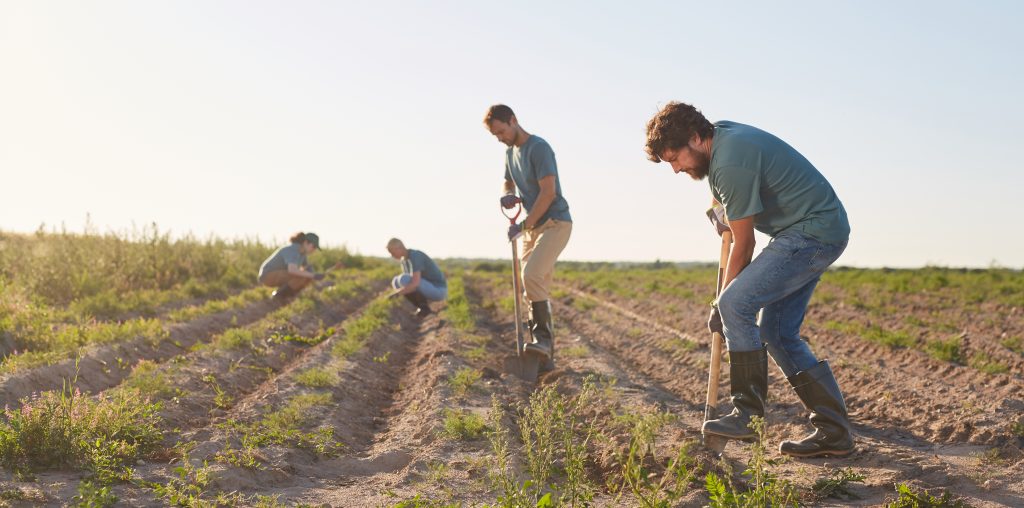When the word militia makes people nervous, and neighborhood watch just doesn’t go far enough, you end up with terms like minutemen, three percenters, sheepdogs, and Mutual Assistance Group. I think Mutual Assistance Group is a great descriptor for the modern role of able bodied and prepared people working together to build resilient communities. Who will help to take care of your family if you get really sick or die? Being a part of a well organized Mutual Assistance Group is an insurance policy of sorts. Operations Security and Personal Information Security must be maintained when meeting new people with a mutual interest in preparedness. The first rule of prep club is that you do not talk about prep club, so how do you form a Mutual Assistance Group?
You can buy supplies, and books, and read articles on the internet to gain knowledge, but nothing beats having more people to lend an extra hand to save time or labor. Be safe and cautious when vetting a new person, make sure they are just as tight lipped about their own preparations. Be downright paranoid and suspicious. Take everything they say with a skeptical ear, because it is easier to get rid of somebody early on, than later when they know your plans and preps and have a reason to be your enemy.
Personality types to avoid
There are a lot of people who will create a liability for your group. For example, human beings are selfish by nature, however there are some who are too concerned with themselves and have little to no regard for the needs or feelings of others. This type of person is problematic now, imagine how much worse will it be when scarcity is a life or death reality. Violent people who are used to solving their problems with their fists are going to be a liability when strategy and patience are required and the potential is high for people like this to show other antisocial signs. You want a few soldiers, you don’t want any spree killers.
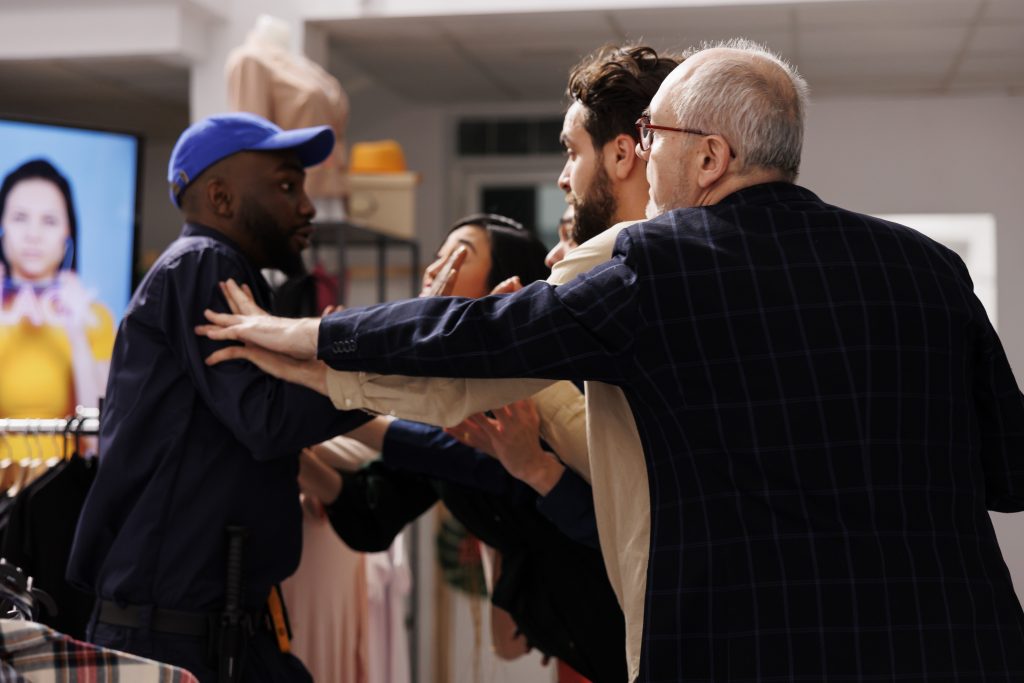
These high conflict personality types are typically rigid and uncompromising. They have a tough time accepting loss, and are typically dominated by negative emotions. These people tend to never take responsibility for negative behavior, and instead will often try to blame others. You will see them often stubbornly trying to repeat failed strategies. Realize these are all very bad things in a cohesive group. They are often narcissists, needing to constantly be the center of attention. They talk over you, demand apologies, but lack empathy with regard to their own rudeness.
I would wager a guess that as much as 70% of people suffer from a combination of normalcy bias and risk homeostasis. By normalcy bias, I refer to people, when faced with impending disaster, underestimating both the possibility of a disaster occurring and the severity of it’s potential effects. People respond to warnings in an often optimistic manner, often referring to ambiguous justifications when shown their error. Take the example in The Black Swan, where Nassim Nicholas Taleb makes the comparison of a turkey who gets fed for months and becomes accustomed to the food and thinks nothing of it when the farmer comes to kill it. Most people are metaphorically this turkey, accustomed to the food and unaware of the impending doom.
Risk homeostasis is not just for adrenaline junkies and extreme sports enthusiasts, It could be something mundane like seeing only 20% chance of rain and not taking a jacket. We often take risks and overestimate our odds of success. Of the remaining thirty percent, I think it is split down the middle between those who will panic and be useless and those who will step up and meet the challenge in a disaster. Taking calculated risks will be necessary, being eager to take such risks may be a warning sign. Somebody who has watched a video showing how to suture on a banana peel, and thinks they can close a wound in the real world, would be an example of over-confidence that could pose a danger to lives.

Arrogance, not to be confused with confidence, should be a red flag. Somebody that has all the answers, and gets stubborn when faced with proof that they have made an error will cause problems for a group’s effectiveness. You want leaders, not commanders. All people are naturally manipulative to a degree, we negotiate with one another to get the best outcomes for ourselves. There is a fine line between manipulation and persuasion. You want to have persuasive people in your group, so that you can communicate ideas effectively with one another. Manipulation is a dishonest and coercive form of influence that is often self serving to the detriment of others. Manipulators like to control others as if they were playing a chess game with life. It is good to consider everyone involved when planning, it is bad to not consider their needs or autonomy in addition to your own.
Conspiracies happen, and not all conspiracy theories are wrong, but somebody who obsesses with them, and looks for nefarious activity behind every major negative event, might be a bit too irrational for your Mutual Assistance Group. This goes for people who are generally panicky people as well. A little paranoia and a moderate level of skepticism is good, but it is easy to go too far. It is my experience that many of these people make decisions with emotion rather than logic. While the negative effects might not be as intentional as some of the previously mentioned personality types, the consequences still aren’t worth it. Asking somebody about a recent event that you know conspiracy theorists jumped on, is a good way to judge somebody’s reasoning skills and grasp on reality.
New preppers should be avoided when considering forming a Mutual Assistance Group. It’s not that they are bad, their heart is in the right place, they will just be a drain on time and energy because they will require extra guidance and advice. They are also more prone to mistakes should you need to depend on them in a life or death situation. Avoid people that are only prepping in one direction, i.e. they have a lot of food, or a lot of gear, or a lot of guns, but not much of anything but that one type of prep. Those who prep mostly guns and ammo are of most concern, as it is possible they will use those to take from others when stuff hits the fan. Another type related to the new prepper, is the natural disaster prepper. They may have extensive stockpiles to weather a week or two, and even a bug-out plan, but they have never entertained the idea of total collapse, or near extinction level events.

How much information does the person share. Do they have pictures of survival gear or guns on social media? Do they volunteer information in person about what they have put back? Discussing their own preps is bad enough, but if they tell you anything about somebody else’s prep, this should be a huge red flag for you to keep looking. Ask probing questions about what kind of events they are preparing for, this will give them an opportunity to display their OPSEC skills. If you discover they are only preparing for a single contingency, you may want to consider continuing your search as well. People like this tend to have tunnel vision. They tend to overlook some of the basics because they are so focused on event “X”.
Religious and other moral beliefs may be important to you, so it is important to probe potential members for their philosophy on life. Having faith can bring some people strength and peace in troubling times. If you have a group with mixed religious beliefs, you may end up reacting differently when death may be imminent. Sometimes people get very zealous with their faith and can make bad judgements based on belief when other people are right in front of them dying. As an example, I personally wouldn’t want a member of my group laying down their gun in a siege thinking it was the rapture or something. Conversely if a group is predominantly of one particular faith the group might grow to resent a member of another belief system. Even if all group members are secular, there are still subjective moral values that should be discussed before sharing much about your prep or your group with prospective members.
Would you take yourself as a group member? Before you start building the group, set goals and have a written purpose. Plan it like a business and make it specific. What are your priorities for survival? What will happen if a group member chooses a family member over the group? Make sure you define terms well and write with such precision and depth that there will be no question to the meaning later.
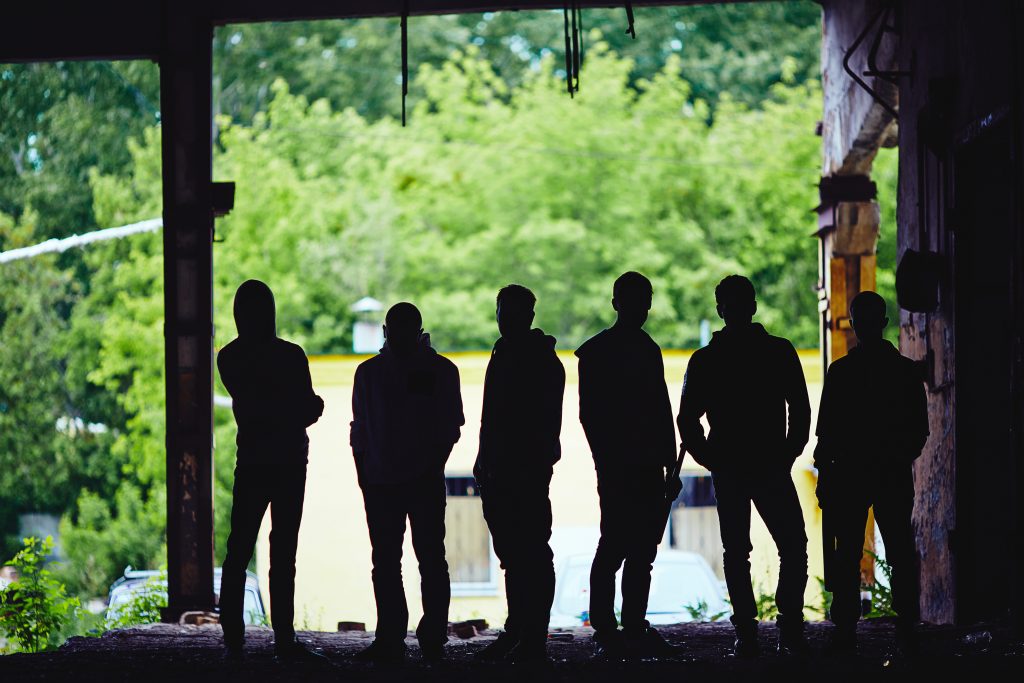
Ideal Size and Structure of a Mutual Aid Group
You’re going to want to have a diverse range of effective members in your group. The way you organize your group may be a little different than how I outline it here, but hopefully this gives you some idea of how to organize your Mutual Assistance Group. Once you figure out what skills you will need in your group, you can figure out how many primary members you will want in your group at a minimum for when stuff hits the fan.
Your group needs a command structure. Command structure should be based on skills and operational usefulness. The group needs a leader, and it might not be you. Too often everybody has the false belief that because they belong to the minority of people that can see the need to prepare, that it makes them leadership material. Often this train of thinking results of stubborn butting of heads or too many chiefs. If this is your group, you will be doomed when lives matter. Leadership is a heavy responsibility when it’s life and death. Nobody should want that burden, but it is a necessary one.
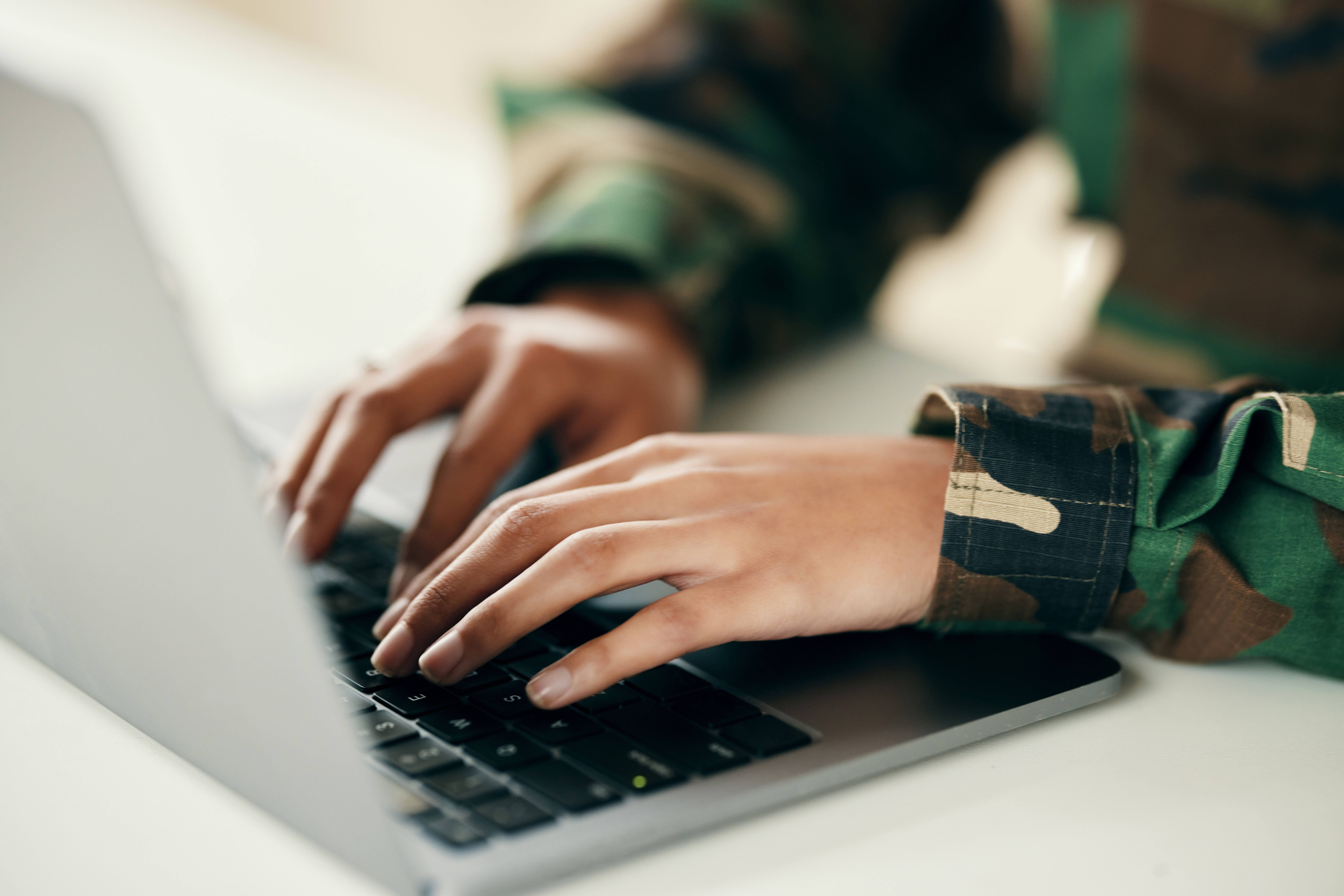
The group leader should coordinate with different sections of specialty to maintain total group cohesion. Intelligence and charisma are important for this group member. The group leader should not be a dictator, yet at the same time running a preparedness group like a democracy can have negative effects as well. It is important for a leader to be agile and open to information from others. An effective and diplomatic communicator, this person should have real-world negotiating experience. Conflict management and risk assessment experience combined with an ability to make decisions under extreme pressure are good skills for a leader for a Mutual Assistance Group.
Intelligence is a very important part of the command structure. Lead by the second in command. This section of your group is responsible for assessing each member and compiling information about them such as: income, children, background checks, psychological information, etc. They are responsible for providing tactical analysis on potential threats to the group’s survival or cohesion. This group will have a map with important locations, like everyone’s house, family member’s work, meetup spots, bugout locations, kid’s schools, churches, community emergency operations centers, etc.
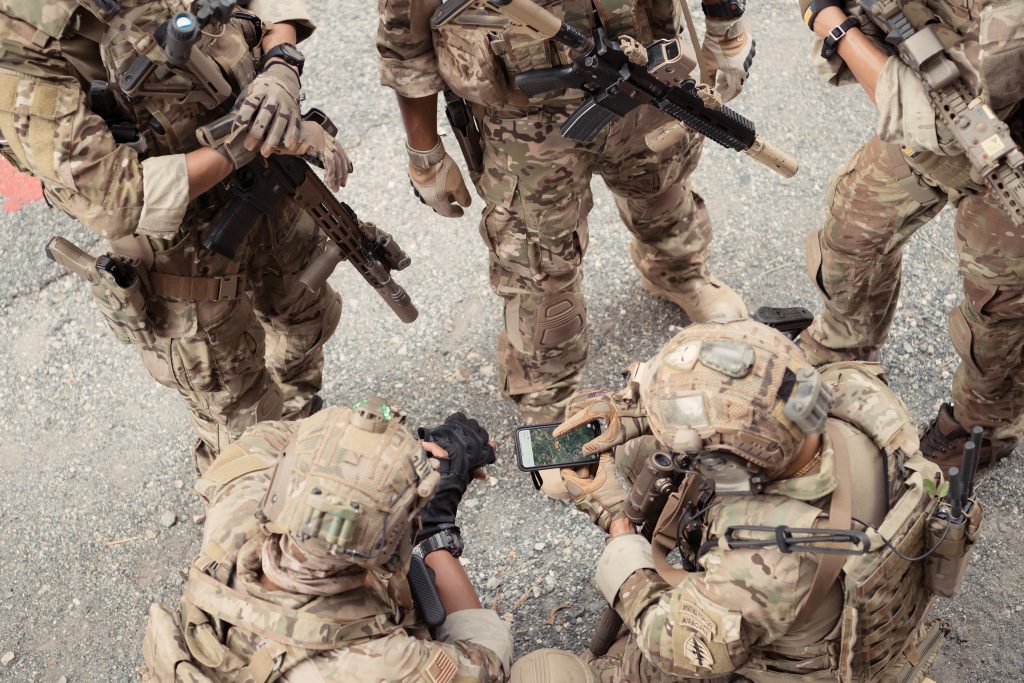
The map may also highlight known adversarial locations that might be of high risk to approach, as well as locations of natural resources or geocaches. A single hard copy should be stored securely and destroyed if compromised. Backup copies can be stored in encrypted form on USB flash drives or SD cards. Use this map to develop evacuation and regroup strategies for every member’s extended bug-out group. You have to trust these people with your life, trusting them with this kind of information should only happen after an extended get to know you period. Having somebody who has HAM radio experience , and is also well versed in conventional and unconventional squad level tactics is important. While, they will probably not be asked to leave home base to do security patrols, their role in planning strategy will be critical.
Intelligence will be responsible for in group justice and questioning of any captured enemy parties. They will monitor the airwaves for information about movement in the area or updates regarding the event. They will frequently be a spokesperson for your group, so diplomacy and effective communication skills are beneficial. This person will be responsible for analysis of after action reports from security patrols. This person or section will be responsible for networking with other useful individuals and groups in the area for mutual defense, bartering, and information sharing. Intelligence will work with the first in command and the operations division to discuss plans and objectives to be carried out by the group.
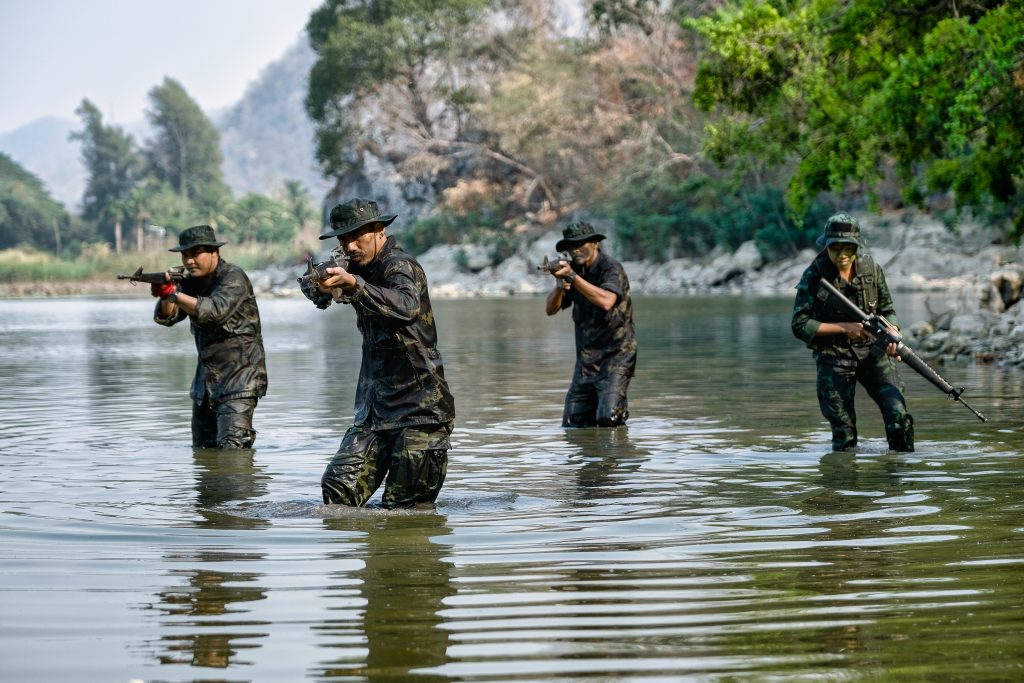
The operations section should be led by a combat hardened Marine infantryman, or special forces soldier. Police, while they have some weapons experience, are not usually trained in defensive military tactics, and should only be considered for support positions in this division. Operations is responsible for developing paramilitary training for the group. They will be responsible for scheduling security patrols and resupply missions, as well as providing after action reports to the intelligence section. They will analyze and improve upon defenses. They will maintain an inventory on weapons and ammunition. They will be responsible for regulating and maintaining group weapons and working with intelligence to procure additional supplies necessary for defense. In the event that the group leader is unable to perform their function, the head of the operations section would assume leadership of the group. Security for your loved ones and preps will be vital when stuff hits the fan, don’t skimp on this one.

Next you will want a division for Quartermaster and Sanitation. These divisions may work together or be combined into one depending on group size. A quartermaster is responsible for assessing group assets and distributing them fairly. The focus of this division is on identifying and meeting the needs or deficits of individual group members. Things like clean water, group meal preparation, non-combat supply inventories, clean clothing, and other logistical issues. This section should be lead by somebody with professional team management experience in an industry that dealt with inventory.
It will also need to have somebody with experience counseling people such as psychology, clergy, or a crisis counseling background. Another good addition to this division would be a teacher who can educate any children who may be a part of the group, as well as assisting with preparing instructional materials to help train other group members. The Quartermaster leader will report to Intelligence on upcoming resupply needs, as well as personal and interpersonal problems. This division will work with the intelligence section to mediate disputes.
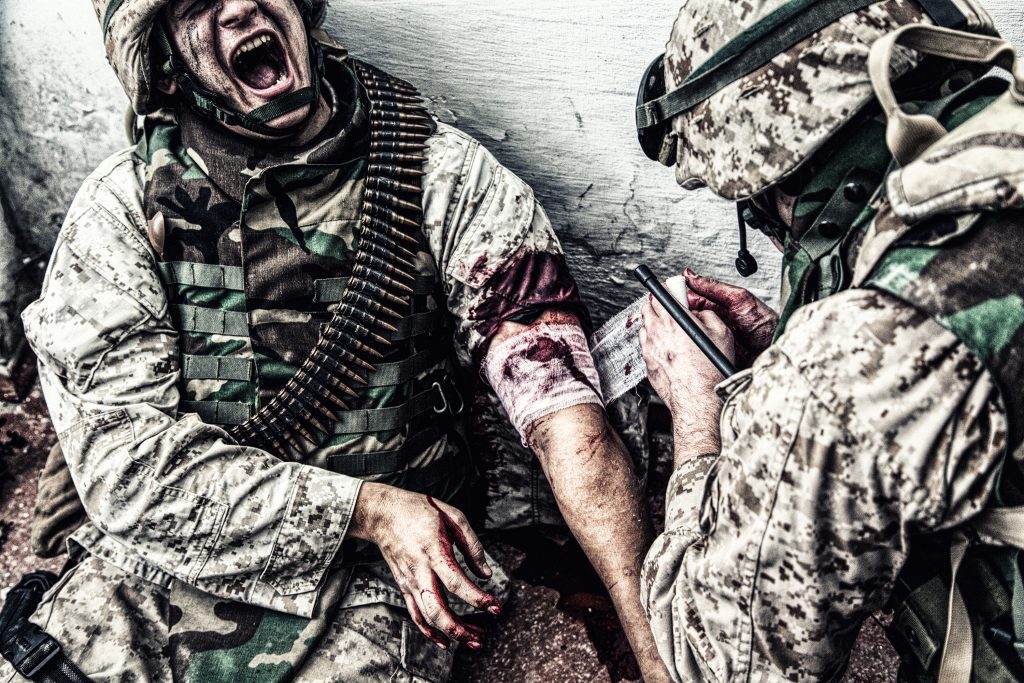
The most important division, Medical, will work with Quartermaster and sanitation to maintain the physical health of the group members, should traditional medical services become unavailable. In an ideal group this would include an MD and an RN with surgical experience, so that moderate injuries can be addressed in situations of limited supplies. Additionally a CNA, surgical tech, EMT, or physician’s assistant, and perhaps a midwife would be helpful to provide an extra set of hands should the Medical division get busy. When not occupied with treating injuries these professionals will work to cross train other group members on life saving techniques, and work with the Quartermaster to ensure each member has adequate personal medical equipment and supplies that they need.
Another essential section is Livestock and Food production. Led by a farmer with off grid homesteading experience who is accustomed to a self reliant lifestyle They will be responsible for managing the care of livestock, and production of edible plants. They will oversee food preservation and seed saving. The leader of this division needs to have the kind of problem solving skills that only come from years of having to improvise. They will work with the Quartermaster to ensure your group stays fed.In an ideal situation you will also have at minimum a veterinary assistant with experience with farm animals not just dogs and cats. They will assist with breeding of food animals as well as working animals such as dogs or horses.
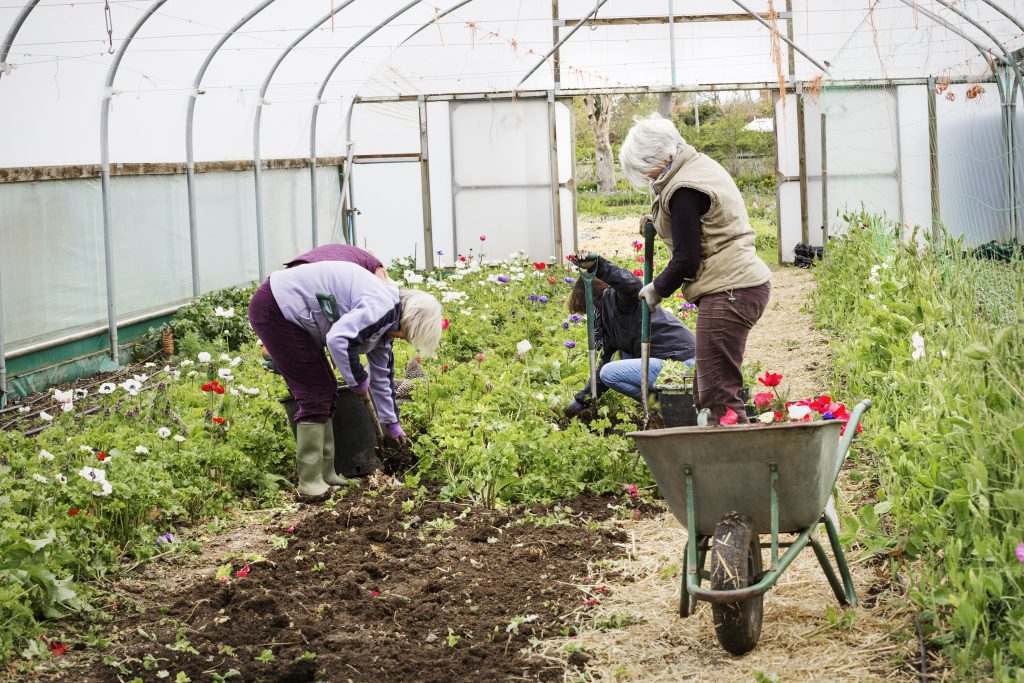
You will want an Engineering division as well that will work closely with the Quartermaster. You want mechanics, electricians, and the like. The proverbial jack of all trades handyman is a good choice. Think McGyver on this one, the guy who can look at an engineering problem and a pile of scrap and build something that may not be pretty, but solves the problem. This person will be responsible for sustaining the group’s power supply, repairing structures and defensive construction like fences and observation posts. They will work with other divisions to help make them more efficient with technology. You want a real creative thinker here. This position may only be one or two people, and it may be a secondary function of another member who is primarily focused somewhere else, but do not discount the importance of a quality engineer and mechanic.
You may want to consider somebody with primitive survival skills depending on how much you rely on your Engineering division. If you choose to add this person to your group, make sure you choose somebody with experience in search and rescue if you can. They can provide overlap support between assisting with farming and livestock and accompanying Operations on long distance missions. For this reason some infantry experience would be preferable as well. You may need this person to have hunting or fishing experience. In general look for an all around outdoorsman, but with a military background.
Another member you may want to consider is knowing a local in your bug out area if you do not spend a lot of time there yet. They can keep you informed of the comings and goings and you can assist each other when you DO visit. This person will coordinate with the intelligence section and be quarantined from a lot of the preparations and plans. They should be an asset that is well networked in the local area to assist you with bartering lines when things go south.

Finally, if you have not found them already, a companion to cuddle up next to can be an immense morale booster. A reason to fight harder to get back home when in the field. Look for somebody who is already interested in preparedness. Unless you foresee your potential mate leading one of the divisions listed above, they need not be as into it as you, provided they support you in it and understand the seriousness of the potential situation. Somebody happy to embrace a 19th century lifestyle if necessary, who isn’t above dressing an animal, or helping to dig a latrine. This might even be the first member of your Mutual Assistance Group. Finding group members who have families might seems like a burden because it means more mouths to feed, but it also means extra hands and minds to help out.
Pets are something to consider having to kill or abandon if stuff hits the fan. Large dogs with security benefits may be spared, but if your group is more than a dozen or so members and everyone has a dog, it may be too heavy of a draw on human food resources to support keeping them all alive. This will have to be discussed ahead of time and will cause distress for the families who may not be able to keep their pets, especially if children have grown attached to them. Dog breeds like Mastiffs, German Shepherds, Border Collies, Pitbulls, Akitas, Rottweilers, and similar will still be valued. They are a force multiplier for security against human or animal predators that might threaten group members, livestock, or supplies.
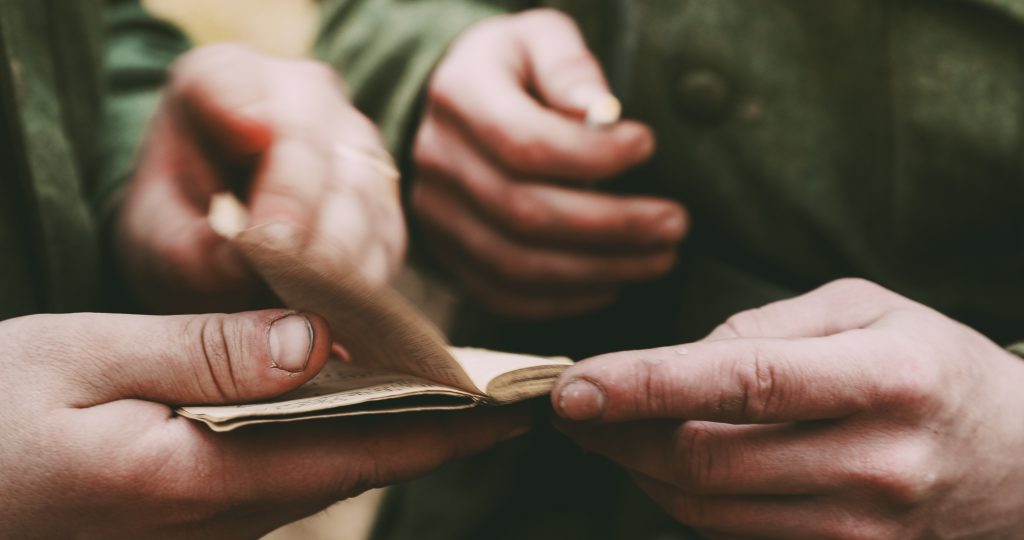
Your core members, the leaders of your divisions, should function like a team. The support members, and the immediate families and other agreed upon members of both, comprise a second wider circle within the group. A third concentric circle can be imagined to encompass human assets in the community that will assist with the trade of goods, skills, and information after the collapse. Depending on your level of community involvement this could also include law enforcement, national guard, firefighters, emergency operations centers, CERT members, city councils, etc..
Responsibilities of Members
Taking into consideration the red flags and vital areas where you can benefit from extra manpower and real world skills. Using this information combined with your SHTF strategy, develop a recruitment strategy so you can start building the group. Many of us know that a TEOTWAWKI event could happen tomorrow, but finding people who you have to trust with your life should not be rushed… if you only know a couple of people right now that you trust to fill one or two roles above, consider bringing them onboard. Even if it takes a year to get a fourth member, it is better than rushing into bringing somebody on board and then discovering problems later.
Members should contribute their own share of the stockpiles. The quartermaster should ration 2500 calories and a gallon of water per person per day for six months to a year. This includes every member of their immediate family and any other people they plan on bringing with during a bugout if approved by the group. Private property needs to be respected, but it is a good idea to ask for equal tangible contributions from the members to put back for the group. An example would be asking each member to bring a bag of beans and a bag of rice for the group stockpile to every meeting.
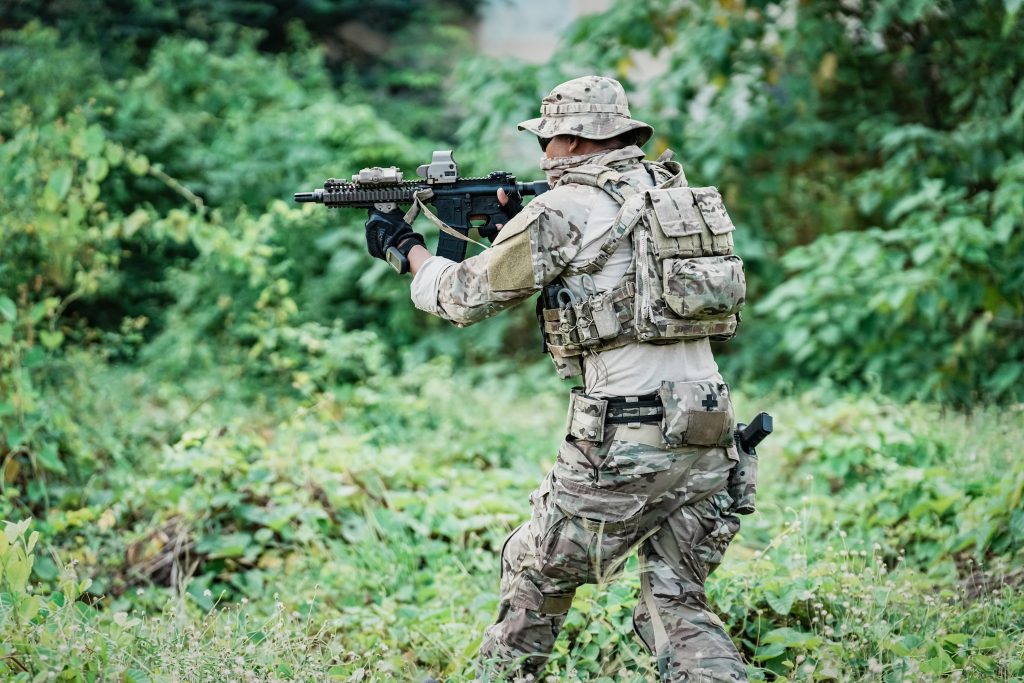
Group members should have standardized firearms, and a good starting point is 5.56mm and .308 ARs, 9mm Glocks, 12 gauge Remington 870s, etc. The reason being two-fold, first you can share parts, mags, and ammo more easily. You can cannibalize a broken gun for spare parts and they will work in the other weapons. Another reason I mention these models is because they are VERY COMMON in America, making spare parts that much easier to come by when the gun store is empty. It is fine if people prefer a different primary weapon, but Operations and Quartermaster should be sure each member has standard group use personal weapons as well. As an example, perhaps you make a personal AR a requirement for entry.
When you go out on scouting missions, resupplies or patrols of the nearby area, you will want to leave a few people behind to keep the homestead secure. Security is a 24-7 prospect as everyone will have to sleep sometime. At minimum six people should be working two at a time in 8 hour shifts to keep watch against security breeches, even if some people are away on extended patrols. You’ll want to be able to deploy a 10-12 person squad if necessary. Although some missions can be handled with a two person team, or 4-5 people in a fire team, occasionally you will have to muster serious resistance against aggressors before they reach your gate. Another consideration for determining group size is that each section leader should have at least one understudy.
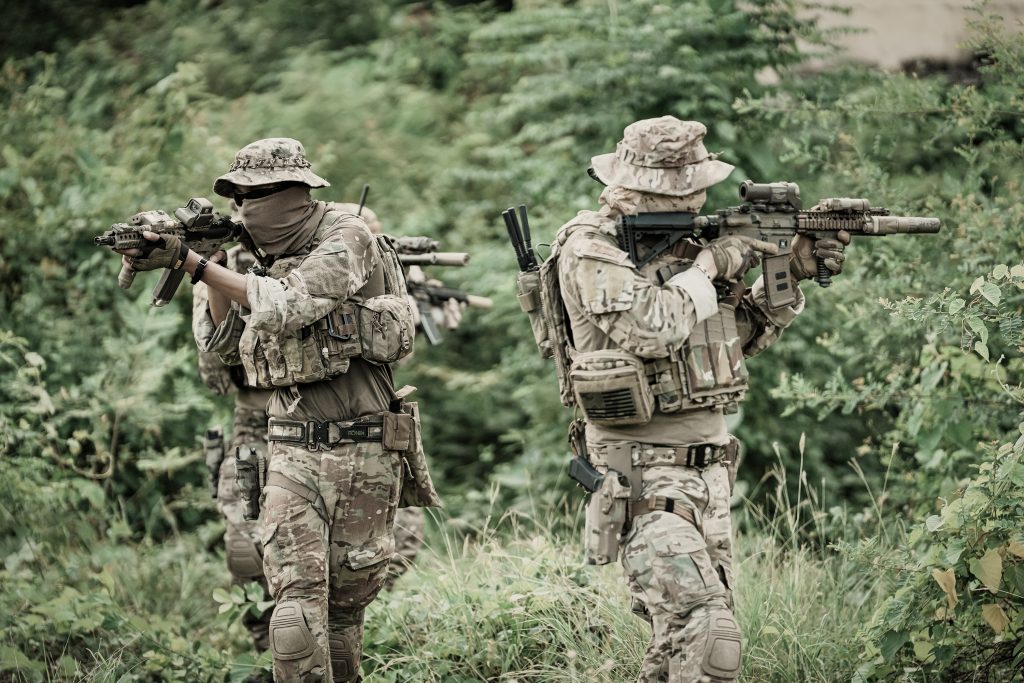
Every member of the group needs to be at military levels of physical conditioning if you plan on incorporating military tactics. Those who cannot keep up will die, or slow down the group risking other deaths. Don’t let out of shape people patrol. Work with them to improve their physical fitness now, so that when they are needed you can rely on them. Another reason being physically fit is important, is because post SHTF survival will require a LOT of manual labor. The more hands you have to help, the less the burden on each individual will become.
In addition to fitness, every member needs to have rifle proficiency while moving and under duress. Make sure each member can do such drills as: ten burpees, then get up, engage a person sized target at 200 yards, do ten pushups, run to a new position of cover, and engage it again. They need to be proficient with function and maintenance of their rifle as well. While not every member needs to have long range shooting skills having one or two members able to consistently put rounds on target beyond 1000 yards can be helpful to provide standoff in a siege situation, or to provide cover during supply trading.
Every adult member of your group should receive CERT training at a minimum. This will give them a comprehensive understanding of how government will respond in an emergency. It will teach them key information about disaster preparedness, first aid such as CPR and wound triage, basic search and rescue, and signs and symptoms to look out for psychologically in people following a community level event. CERT training will also make you better prepared to assist your neighbors in the event of a short term event. If you have teenagers in your group it is important to get them on board with this as well.
Group Activities Before and After SHTF
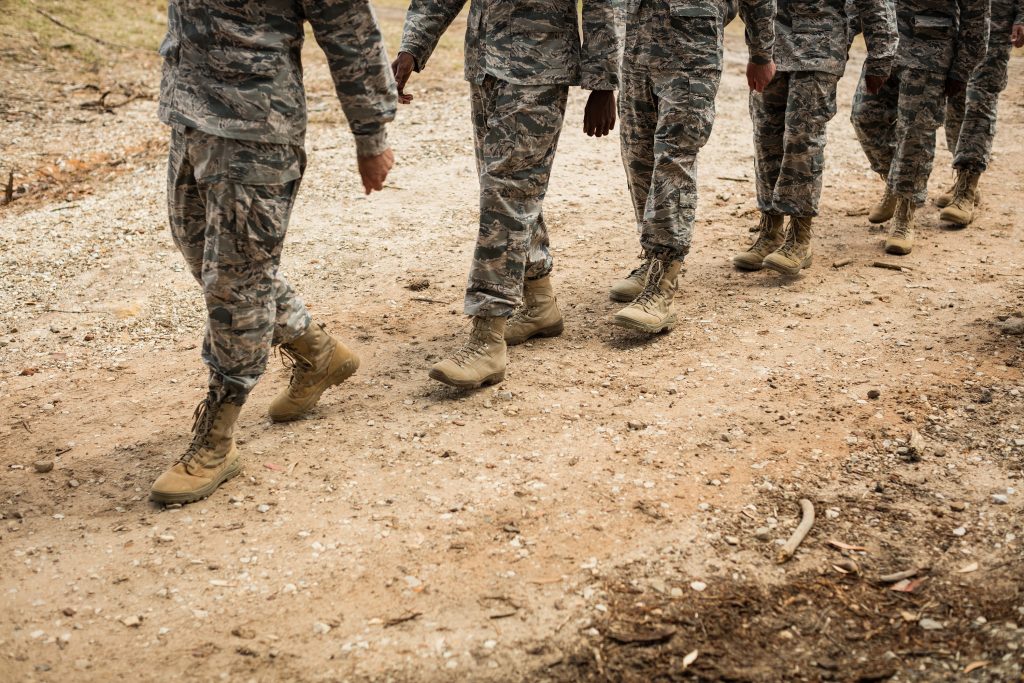
Deciding how frequently you will meet as a group prior to SHTF is an important consideration. We recommend every member meet together at least once a month, and division leaders meet at least once a week. If a member does not attend a meeting they should be put on a form of probation within the group. People say they will show up, and then they let life get in the way, or make excuses. Varying level of commitment among group members can be a massive source of conflict. Having a zero tolerance policy for anything short of 100% commitment is a good starting point. The meetings don’t have to be long, an hour or two maybe.
Perhaps one month Everybody meets at an outdoor shooting range for shooting drills. Maybe another month the medical specialists prepare instruction on first aid. Another month could be group participation in CERT training. You may meet to discuss the group bug-out strategy. Administrative duties can be carried out during the weekly section leader meetings. You may work together on different areas of your group’s preparations. Or you may just have a discussion meeting. It’s important that when members attend the meeting they bring bugout gear and their primary group weapon and any prearranged group items such as food, water, ammunition etc. When the entire group is together, the group should be bugout ready, even if you aren’t running a drill.
A mutual assistance group is something to consider once you have at least 6 months to a year of food, water, and supplies stocked back, as well as a few years of knowledge. Not something a beginner to the preparedness lifestyle should spend much time worried about. With this in mind, if you are new to preparedness, consider where you might eventually fit within the group structure I have outlined. What skills do you already have that can help make you an asset when stuff hits the fan? Lone wolves will die, be a team player, have value to offer the group. Join the conversation in the comments.
